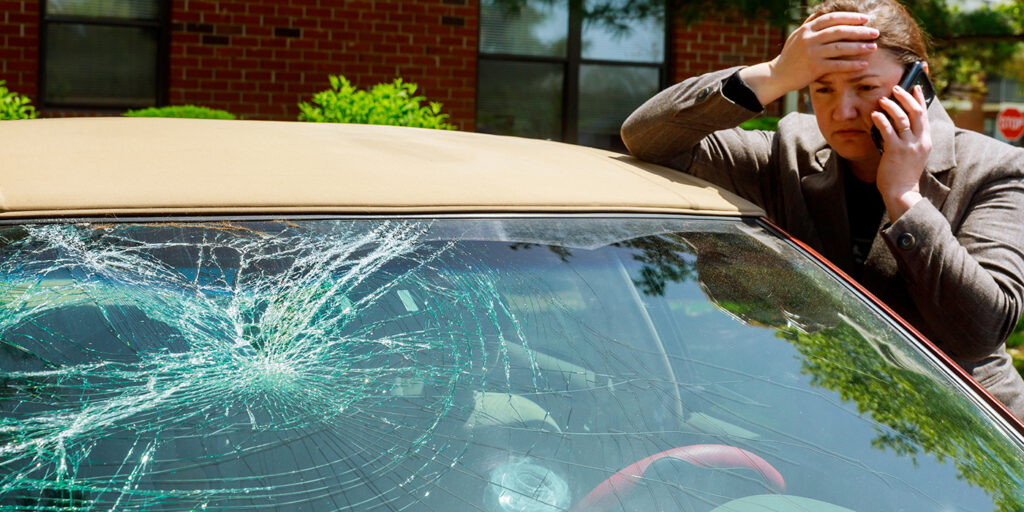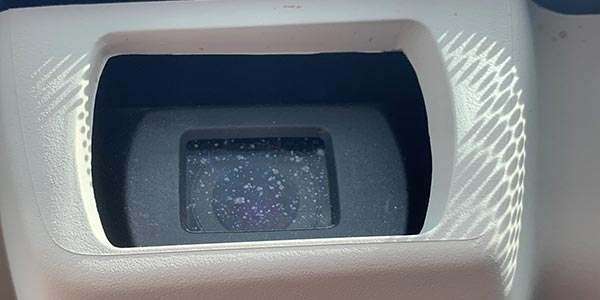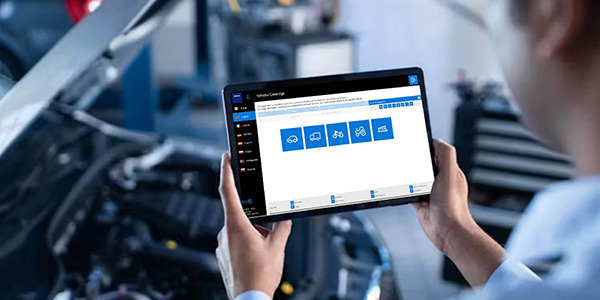Original equipment (OE) vs. aftermarket parts for the repair of vehicles has been a subject of debate for the collision repair industry for as long as I can remember. I’m not saying anything that’s not already known to all of us in the industry, but the debate is primarily between the vehicle manufacturers and the insurance companies. This leaves the repair shops and the customers caught in the middle.
What’s the right choice? The auto glass industry finds itself in an interesting predicament regarding OE-manufactured glass and aftermarket glass. This has been a discussion for years, but with new advanced driver-assistance systems (ADAS) features using cameras mounted to the glass, the tolerance required of the glass and its components to be correct for proper function, the discussion has taken on a new twist.
Changing the Game
ADAS features have changed the game in the auto repair industry as automakers increase the number of vehicles equipped with more of these safety systems each year.
With ADAS features, calibrations have become a common procedure to validate that repairs were completed correctly and the ADAS system is functioning correctly. Vehicle manufacturers have provided the industry with instructions and documentation on how to perform the repairs and calibrations as to what, where, when and how — including what parts should be used. Many vehicle manufacturers have statements on OE glass for replacement of windshields. Then, of course, there’s the real world of repairs and the costs associated with using OE windshields.
The cost of windshield replacements in the U.S. has risen dramatically when you add the calibration of vehicles’ ADAS to that windshield replacement cost. When you add the difference in pricing between the OE auto glass and auto glass purchased through the auto glass manufacturers and their warehouses (which is generally termed aftermarket glass), you see the costs rise even higher.
I made some random phone inquiries on prices, and below is what I found out for a 2020 Honda Accord. Of the companies I called, I was able to get quotes with no calibration and with calibration. I then asked for pricing if I wanted an OE glass and calibration.
The industry norm is that many OE parts are more expensive than aftermarket parts. The point to notice here is the major difference in cost in windshield replacement to all of us that has happened over a few short years. It doesn’t matter if you’re a shop, insurance company or consumer — the added calibration has increased costs dramatically.
Vehicle Safety
To most consumers, a windshield is something you just look through. There is no thought to vehicle safety or structural integrity. ADAS features changed the auto glass and body shop repair industry. With new sensors and cameras mounted to the windshield, the glass and the relationship to the ADAS camera has become more of a focal point. The windshield has become a critical part of the ADAS features and how they operate. How the camera looks through the glass and also how the camera is mounted to the glass and the bracket placement that holds that camera require a very tight tolerance factor that was not a factor before ADAS features. Explaining or teaching this to a vehicle owner in regards to why costs have gone up and why the replacement may not be done in a mobile situation has become an everyday occurrence for all repair shops.
The OE Advantage
I understand why vehicle manufacturers want only the parts they engineer to work with their vehicles to be used in the repair of vehicles. They have a vested interest in the performance of the vehicle on the road as well as the longevity and aesthetics of that vehicle that they stake their reputations on, doing all the functions designed for driving and safety. They have a vested interest in protecting the investments families have made in purchasing their vehicles. Vehicle manufacturers also have tremendous pride in the safety of the families that drive or ride in those vehicles — not to mention the accountability to the performance and safety of any products they design and produce.
Vehicle manufacturers have spent years building and earning the trust of consumers. They want to maintain and keep that trust consumers have placed in those vehicles. The only way to control and maintain that level of commitment is to maintain the quality of the vehicles and their parts — which is why so many vehicle manufacturers have certified shops for collision repair and why more certified glass programs for OE are now becoming the norm.
I commend what the Auto Glass Safety Council (AGSC) has done to standardize and help bring a voice of reason to auto glass replacement in the repair industry. I’ll also give Ford Motor Co. a huge shout-out for recognizing the value of AGSC-certified technicians for auto glass replacement. Ford’s partnership with VeriFacts to establish its certified glass and installer network is a tremendous step for all.
When a vehicles are new, vehicle owners want to keep their vehicles as close to the factory look and feel as they possibly can. They’ve made the second most expensive or, in some cases, the most expensive purchase or investment in their lives. They want to maintain those vehicles’ values and looks for as long as possible. The trust that the consumer and we as repair professionals have as to the quality and fit of OE parts is well-deserved. OE part quality and fit is very consistent throughout all repair industries, be it auto glass, auto body or mechanical, although getting the part undamaged due to shipping has been a challenge in the auto body repair industry (but that’s a different story).
The engineering that goes into every part to meet the quality and performance is also a benefit to using OE parts that all of us have learned to trust. Do not get me wrong, nobody is perfect, but OE part consistency is the gold standard for all aspects of repairs. Another factor for newer vehicles is the fact it takes the aftermarket industry time to catch up in manufacturing to supply and demand of parts. With newer vehicles, aftermarket parts are not an option in many cases as the aftermarket supply chain has not caught up. All the engineering and effort into every part and into the overall development of that vehicle has its costs and is a contributor to the cost of OE parts.
For the auto glass industry, there is another benefit to the OE glass. When calibrations fail (and they will), the consistency in OE windshields most of the time may rule out glass defects as the culprit. This leads the calibration technician into looking at other causes of the failure. In many cases, if a dealer is asked to calibrate or help troubleshoot why a calibration failed, he or she may immediately ask that an OE windshield be installed in order to rule out any problems in the quality of the windshield and its tolerances. This truly does define the quality of OE parts in the repair world.
Aftermarket
For this part of the article, we will define aftermarket parts as any parts not purchased through a dealer source. This includes original-equipment manufacturer (OEM) glass from a glass manufacturer that supplies to the OE but also supplies to the auto glass industry through warehouses and supply chains nationwide. Auto glass manufacturers may supply glass parts to the industry for vehicles for which they’re not OE suppliers. These glass manufacturers will supply a statement that their glass parts meet and exceed the OE requirements when using their non-OE glass. You may ask these glass suppliers about the manufacturing differences between the auto glass they make that’s considered OE and the auto glass they sell through their supply chains. Another source of auto glass is truly aftermarket glass, which is an auto glass manufacturer that produces auto glass and is not an OE supplier of glass to any vehicle manufacturer.
With the cost on windshield replacements climbing, it’s no surprise that insurers and repairers need to seek out aftermarket parts to control these costs. Many consumers do not have auto glass coverage on their insurance and pay out of pocket. Another point would be the high deductibles that many insureds carry on their policies, and these consumers pay out of pocket for repair services too. Aftermarket parts have provided a cost-effective solution for repairing vehicles.
Quality
When ADAS features — in particular, the front-facing camera (FFC) mounted on the windshield — became prevalent in vehicles, a noticeable quality difference between the OE glass and the aftermarket glass became apparent. Many companies replacing windshields were finding that, with aftermarket glass, calibrations were failing. Due to the fact that the industry was still learning how calibrations work and what the parameters were for a successful calibration, the failure was quickly attributed to the aftermarket glass.
In many cases, if a repair company sent a vehicle to a dealership to have a calibration completed, some dealerships would not do the calibration without the OE glass in the vehicle. There were many reasons for this thought process by the vehicle manufacturers and dealers. The process of trying to establish the cause of that calibration failure was a time-consuming and frustrating process for any technician. The fact is that, in the auto glass industry, performing a pre-scan before working on the vehicle was rarely done. Using OE glass (and understanding the quality it was consistent for) eliminated the possibility of the OE glass being the problem. Now, a technician could start looking for other factors as to why the calibration failed.
With this scrutiny of glass quality, OEM glass suppliers stepped up their quality control of the glass they were supplying to the repair industry. A major factor was the brackets or attachments to the windshield that hold the FFC. The tolerance of these FFC mounts are extremely tight, as even a degree of difference has proven to be a reason for failure during calibration or a failure of the ADAS features to perform. This is why there is no recommendation to ever glue or reattach any of these brackets to the windshield — the tolerance is too tight and the risk factor is too high.
Carlex Glass has information on its website and Ford Motor Co.’s website on the difference a glass not made to OE tolerances makes in its vehicles. It’s not just the brackets but curvature too. It sets the bar very high for all auto glass manufacturers and teaches all of us in the repair industry how tight the requirements are for parts needed to ensure that all safety systems operate correctly.
Failed Calibrations
We now know that aftermarket glass can meet the needs for auto glass replacement. Which glass to use, OE and aftermarket, is a decision that the vehicle owner, shop and insurer must come to terms with. I’m not here to advocate for or condone either one, as I see advantages of both. But when a calibration fails after a windshield has been removed and installed (R&I) or replaced, there is no code to tell you why — only a technician who must reason through the possible problems creating the failed calibration.
The AGSC has a solid troubleshooting guide on what to do if a calibration fails. First, do not assume that, if it is aftermarket glass, the windshield part is the problem. Take the time to determine the cause:
- Did the system operate before the glass was replaced? Always pe-scan for diagnostic trouble codes (DTCs).
- Did the system get damaged during install? Some technicians leave the camera hanging during windshield replacement, causing damage to cameras from the shock of being bumped or hit by technicians or tools. This will be evident from a bad camera code that was not present in the pre-scan.
- Was the glass cleaned in front of the camera? Look for spots and contamination.
- Was the camera mounted to the glass correctly? This is a very common mistake.
- Was the connector plugged in correctly? Very common mistake too.
- Did the camera lens get touched or coating damaged? Never touch the lens!
- Was the camera defrost damaged, and is it plugged in correctly? Is it OE or aftermarket? The aftermarket kind may not be recognized by the vehicle or software being used for the calibration.
- Are you maintaining proper voltage for the procedure?
- Are all vehicle prerequisites met: tire pressure, fuel and excess cargo?
- Is the environment correct: vehicle and targets on level surface, target free from glare of sun and shadows, free of background clutter confusing the camera and anything moving the target like wind or fans?
- Software: Is it up-to-date? Does the camera need a programming update? Is it capable of accessing vehicles systems?
- Setup: Is the target set to the proper height and distance and centered correctly?
All of these are factors that may not be associated with the quality of the glass. A rule of thumb is if the calibration fail is instant, the software and connections are a good place to start. If it takes time, then the list above is a good start to find the reason for failure — provided it’s not the glass itself.
Summary
The reality is that calibration failures can be many things, from the glass to technician error to software not being compatible. All the technician has is a tool saying the calibration failed or a test drive where the vehicle signaled that the calibration failed. The skill of the technician to troubleshoot all the possibilities is a critical part to doing calibrations. That skill requires a tech to never assume but verify.
I could go on for hours if not days on this subject, so this is just a brief explanation of some of the differences. I am not condoning or condemning any process; I believe the OE has valid points and concerns as well as a vested interest in the safety of its passengers. However, I just put tires on my pickup that I did not buy at the dealer. I also changed my oil with stuff I got at AutoZone.
















